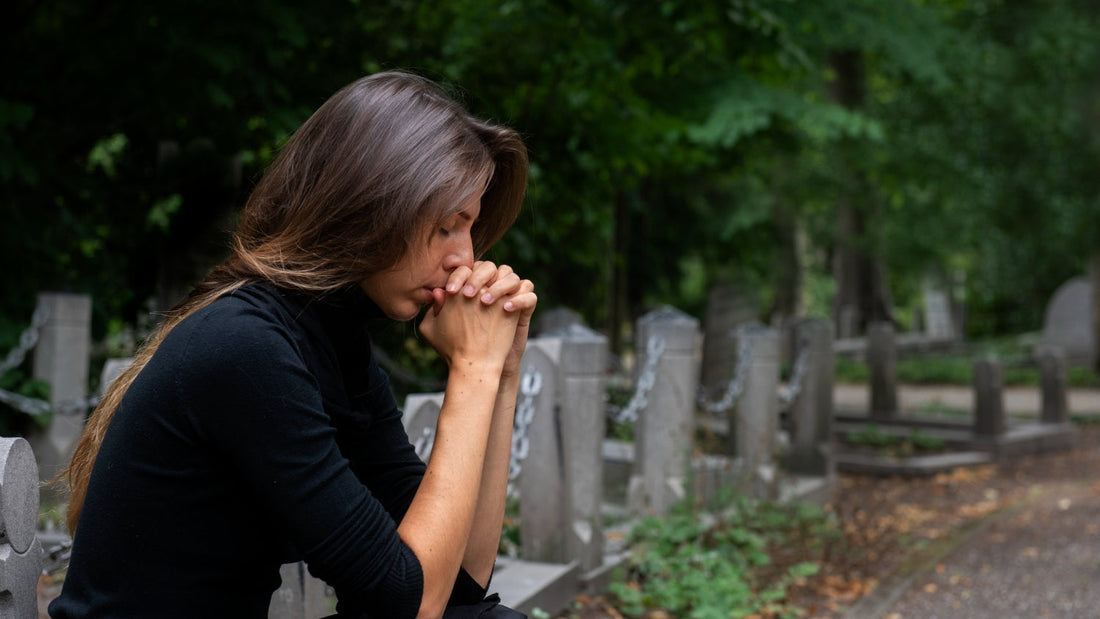
How to Heal After Cremation | Grieving Process Explained
Share
Navigating Grief After Cremation
Cremation offers closure for families, but the emotional pain that follows can be overwhelming. Grieving after cremation is a deeply personal experience that affects the mind, body, and spirit. While cremation rituals may provide comfort, they also raise new emotions, leaving many wondering how to heal and move forward.
This article explores the psychological effects of cremation, the hardest stage of grief, and practical ways to find emotional balance and healing.
What Are the Psychological Effects of Cremation?
Cremation can trigger a variety of emotional responses. For some, it provides comfort, knowing their loved one’s ashes remain nearby. For others, it intensifies the finality of death.
Common psychological effects include:
- Emotional distress – sadness, guilt, or anger.
- Mental exhaustion – difficulty focusing or making decisions.
- Physical symptoms – fatigue, loss of appetite, or insomnia.
- Spiritual questioning – reflections on mortality, faith, or purpose.
Understanding these effects helps normalize what you feel after cremation.
What Is the Hardest Stage of Grief?
The grieving process is often described in five stages: denial, anger, bargaining, depression, and acceptance. While each stage is painful, many people find depression to be the hardest.
During this stage, feelings of emptiness, hopelessness, and loneliness are strongest. It’s important to remember that depression is not permanent—it is a stage of grief, not the end of healing.
Difference Between Grief and Mourning
Many people confuse grief and mourning, but they are not the same.
- Grief: the internal emotional response to loss (sadness, pain, longing).
- Mourning: the outward expression of grief through rituals, funerals, or cultural practices.
After cremation, families may choose to mourn through memorial services, scattering ashes, or creating keepsakes. Mourning provides a structured way to channel grief into healing.
How Long Does Grieving Usually Last?
One of the most common questions is: “How long will I grieve after cremation?” The truth is—there is no timeline.
- Acute grief often lasts weeks to months.
- Integrated grief (living with loss) can last for years.
- Some people carry grief for a lifetime, but its intensity changes over time.
Healing is not about “getting over it” but about learning to live with love in a new form.
How Do You Know When You’re Done Grieving?
Grief is not something you finish—it’s something you learn to live with. Signs that you are moving toward healing include:
- You can think of your loved one with more love than pain.
- Daily functioning and routine slowly return.
- You can participate in life while carrying their memory.
- Emotional triggers still hurt, but the intensity is less overwhelming.
Healing after cremation is a gradual transformation, not a definite endpoint.
Emotional Healing Strategies After Cremation
Finding comfort and healing takes effort and self-compassion. Helpful strategies include:
1. Create a Personal Memorial
Keep ashes in a decorative urn, plant a memorial tree, or create a keepsake corner with photos and candles.
2. Share Memories With Others
Storytelling helps keep your loved one’s memory alive and eases the feeling of isolation.
3. Consider Grief Counseling
A professional can help you navigate complicated emotions and provide coping tools.
4. Embrace Self-Care
Nutrition, rest, and physical activity reduce the strain of grief on your body.
5. Spiritual or Cultural Practices
For many, prayer, meditation, or cultural mourning rituals bring comfort and closure.
Memorial Keepsakes for Comfort and Healing
Memorial items can support emotional healing:
- Keepsake urns – Small cremation urns for dividing ashes among family.
- Cremation jewelry – Necklaces or bracelets containing ashes.
- Personalized plaques or stones – Honoring life in a tangible way.
These keepsakes create a lasting connection and support the grieving process.
FAQs on Grieving and Healing After Cremation
1. What are the psychological effects of cremation?
Emotional distress, fatigue, sadness, and spiritual questioning are common after cremation.
2. What is the hardest stage of grief?
Depression is often the most difficult stage, marked by deep sadness and withdrawal.
3. How do you know when you’re done grieving?
Grief never fully ends, but healing begins when memories bring more peace than pain.
4. What is the difference between grief and mourning?
Grief is the inner emotional pain of loss, while mourning is the outward expression through rituals and memorials.
5. How long does grieving usually last?
There’s no fixed timeline. Acute grief may last months, while integrated grief can continue for years.
Conclusion: Healing With Time and Meaning
Grieving after cremation is an emotional and psychological journey. While cremation provides closure, healing comes from rituals, support networks, and personal reflection. Remember: grief is not something to “get over”—it is a process of adjusting, honoring, and carrying love forward.
Whether you create a memorial, seek support, or embrace keepsakes, every step you take brings you closer to emotional balance. Healing after cremation doesn’t mean forgetting—it means remembering in a way that brings peace.
